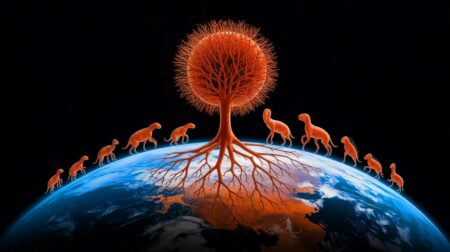Photo: Wikimedia Commons/Agência Brasil
Few people appreciate the importance of saving the Amazon’s rainforests more than the people who inhabit them. And indigenous people have now called on conservationists and governments to help them protect the Amazon’s beleaguered forests from any further harm.
The Coordinator of Indigenous Organisations of the Amazon Basin (Coica) issued the call last week at a global biodiversity summit in Marseille where the International Union for Conservation of Nature (IUCN), of which 61 countries are members, endorsed the inclusion of indigenous peoples in conservation projects in the Amazon.
The IUCN said it was “deeply concerned about the increase in deforestation since, during the 2020 pandemic, at least 2.3 million hectares of primary forest were lost in nine countries in the Amazon Basin, which means a 17% increase in deforestation compared to 2019.”
The conservationists’ stated aim is to enlist the Amazon’s indigenous communities in historic efforts to protect 80% of local forests by 2025 so as to avoid reaching “a point of no return” in one of the world’s most important ecosystems where ongoing large-scale deforestation is threatening the very survival of local rainforests.
In a statement the IUCN has called on the region’s governments to restore at least half of the Amazon’s degraded forests by the middle of the decade while also facilitating indigenous peoples in protecting their ancestral lands and territories from any further encrouchment.
The latter demand is in line with one made by Coica. “We seek to build a new alliance with equal rights on equal terms, but we see that there is still much to do, so much to recognise,” explained José Gregorio Díaz Mirabal, a member of Venezuela’s Wakuenai Kurripaco people who is a coordinator of Coica.
“Less than 1% of all the funding that is invested in protecting intact biodiversity and mitigating climate change in our territories reaches our communities, and that has to change,” the indigenous activist noted. “It’s absurd that so much of the funding goes to consultants who are sent to tell us what we already know about how to conserve what we are already conserving.”
However, in countries like Brazil indigenous rights are being violated on a regular basis. The country’s current government has enacted new laws whose effecy is to deprive indigenous communities of their rights. It has also shrugged off global calls to desist from any further forest clearance within the Amazon’s rainforests, which has been continuing at alarming rates.
Last year, for instance, deforestation in the Amazon in Brazil was up by 17% over the previous year while raging forest fires, many of them set deliberately in an effort to clear forests, devastated entire ecosystems. In the process, indigenous peoples lost much of their ancestral lands to such invasive practices.
Increasingly, environmentalists worldwide are coming to recognize that conservation projects and indigenous rights must go hand in hand. Indigenous people can lead the way in preserving forests and other environmentally endangered areas that form an integral part of their cultural identity, conservationists say.
“Protection for nature conservation need not and should not exclude people,” stresses Stewart Maginnis, global director of the IUCN’s nature-based solutions group. “Many of the world’s protected and conserved areas are managed in a way where people and communities live and work within their boundaries.”
Did you like it? 4.4/5 (22)








